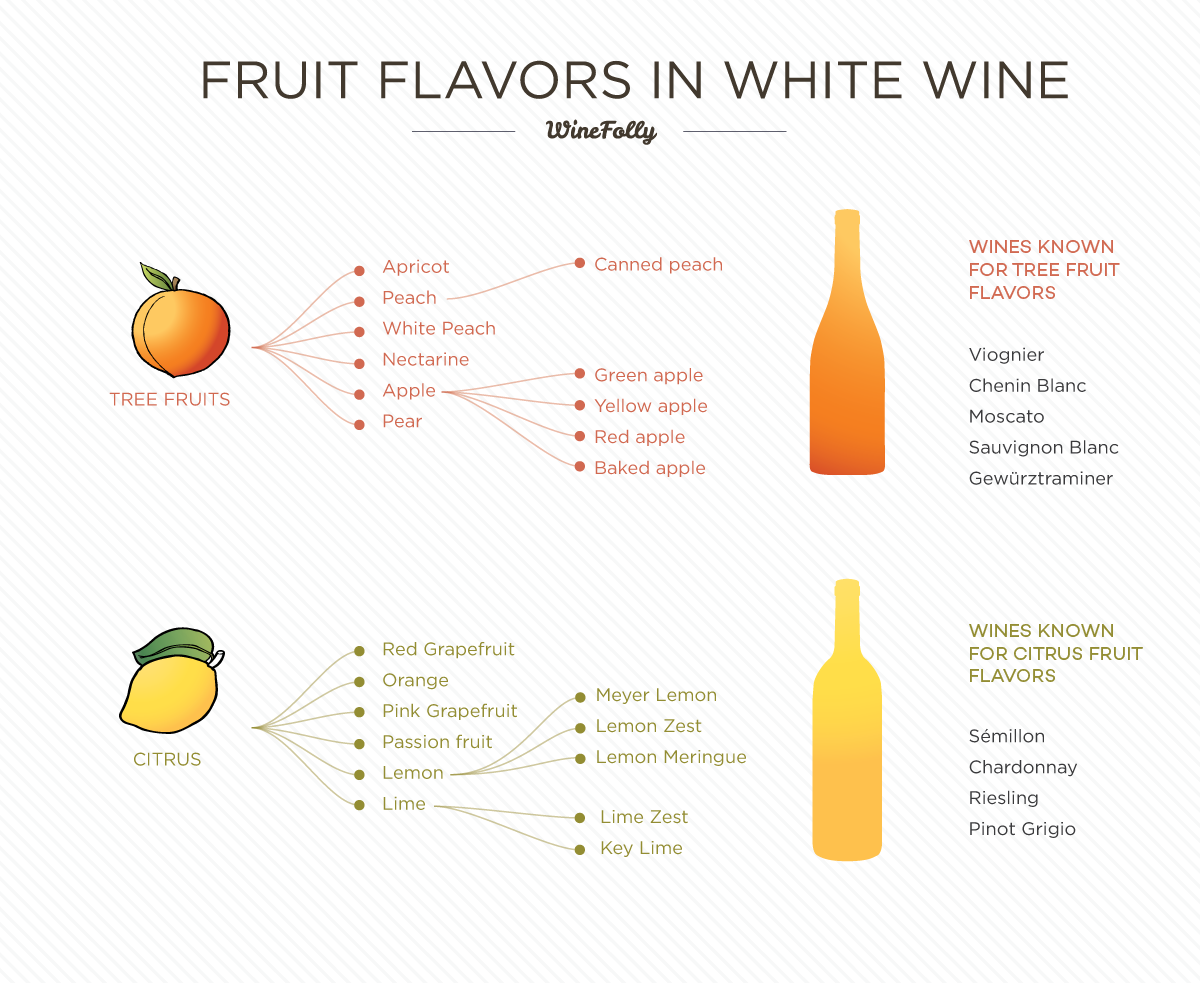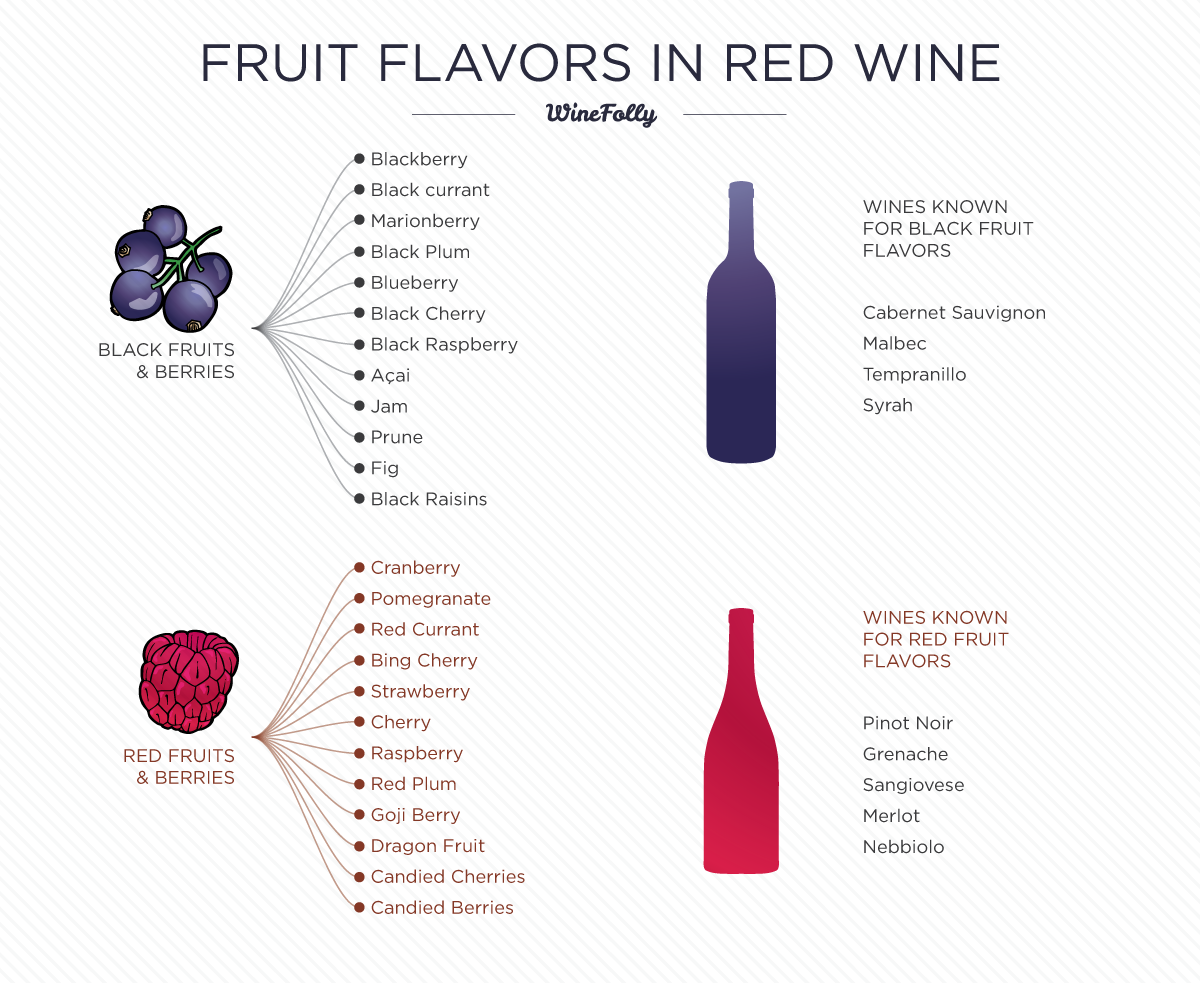Where do flavors in wine come from?
If you ever have a chance to taste a fresh Chardonnay grape, you’ll see how wildly different it is from Chardonnay wine.
Chardonnay grapes taste more like regular table grapes then the complex flavors of apple, lemon, and butter that waft from a glass of Chardonnay wine.
Where Do Flavors in Wine Come From?
Wine’s flavors come from aroma compounds —stereoisomers as scientists call them— that are released during fermentation.
So, when you smell wine, the alcohol volatilizes (evaporates into the air) and carries these lighter-than-air aroma compounds into your nose. Each wine can contain hundreds of different aroma compounds and each compound can affect the flavor of a wine.
Our brains often have multiple responses to one stereoisomer. For example, the lychee fruit flavor in Gewürztraminer can also smell like roses.
Fruit Flavors in Red Wine
The first, most obvious flavors to identify in wine are the fruit flavors.
Fruit flavors in red wines typically fall into two different categories: red fruit and black fruit flavors. Differentiating between the two types will make you better at identifying your favorite types of wine or at blind tasting wines. Each wine variety can offer a range of flavors. For example, Pinot Noir generally exhibits red fruit flavors, but those can vary from tart cranberry-like flavors to sweet black cherry or raspberry-like flavors.
Wines with more “black fruit” flavors tend to be more full-bodied, including wines like Cabernet Sauvignon and Syrah. Of course, there are some exceptions to this rule, but this idea is fairly reliable if you’re just getting started.
Red Wine Blends Are a Mix of Flavors
Red wine blends are a winemaker’s opportunity to blend red and black fruit flavors together. A great example of a red wine with both red and black fruit flavors is the GSM blend. This wine blend originates from the Côtes du Rhône of France and is made with Grenache, Syrah, and Mourvèdre. Grenache has mostly red fruit flavors whereas Syrah and Mourvèdre have mostly black fruit flavors. Like blending colors on a palate, winemakers take a portion of Grenache and touch it with a splash of Syrah and Mourvedre to add body and complexity to their wine blend.
If you are tasting a red blend, it is possible to identify both red and black fruit flavors. In doing so, you’ll actually be picking out the different wines used to create that blend. Experts can even isolate the flavors in their mouth and make an estimate as to what the blend contains.

Fruit Flavors in White Wine
White wines offer two major fruit types: tree-fruits and citrus fruits. The more you taste white wine, the more you’ll realize that the same type of wine will vary wildly depending on where it’s grown. For instance, tasting a Chenin Blanc from South Africa will exhibit peaches and lemons, whereas Chenin Blanc from Anjou in the Loire Valley, France will have much more lime and green apple fruit aromas. This has a lot to do with the climate where the grapes were grown.
When you taste a white wine, think about the fruit flavor and then focus on the ripeness of that flavor.
Our noses interpret smells differently
Our noses interpret and prioritize aroma compounds differently and we also adapt to different “smell” environments. For instance, have you worked in a room with a scented candle and after a few minutes can no longer smell it at all? It’s possible to get over-exposed to a wine’s aroma.
Fortunately, most people agree on major flavor categories when it comes to wine. At the end of the day, we’re all smelling the same wine, we just usually use slightly different descriptors. Generally it’s easy for people to agree on fat-brush or “macro” categories for the flavors in wines, even if they disagree on the specifics. One person’s peach may be another person’s nectarine, but they both can agree a wine has stone fruit aromas and flavors.
Wine Flavor Chart
Quickly identify flavors in wine using the printed version of the aroma chart.



